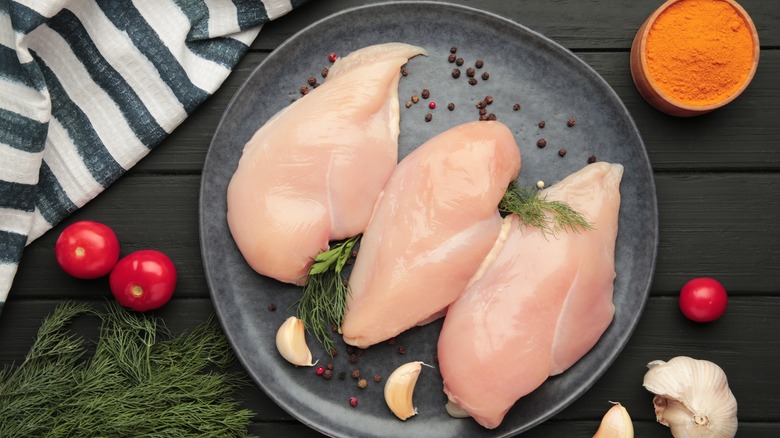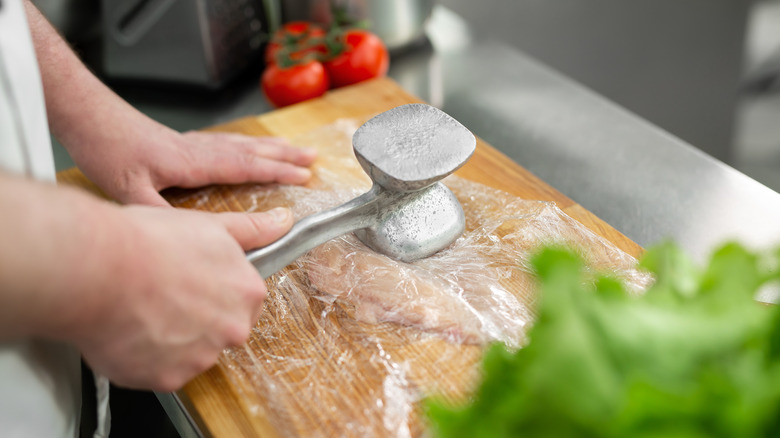Pounding Your Chicken Is The Secret To A Quicker, More Even Cook
We may receive a commission on purchases made from links.
From quick weeknight meals to protein-packed lunches, chicken is one of the stars of the meat world. Unfortunately, it can be hard to appreciate how tasty and succulent chicken can be since it's so easy to overcook. Dry, pale, flavorless chicken is no one's idea of a good time. One reason chicken breasts and thighs in particular are often overcooked is that they're usually not a uniform thickness. These cuts often have thick and thin sections, which leads to uneven cooking. The thicker areas take longer to cook through, which leaves the thinner sections overexposed to heat, drying them out. To solve these issues, many chefs opt to flatten chicken into an even layer so it all cooks at the same rate. Pounding chicken in a simple way to make the cooking process easier, and with the right setup, it can even be a bit therapeutic!
Flattening chicken also has a few other advantages, which is why it's part of making the perfect fried chicken. For one thing, it helps to tenderize the meat. It also reduces cooking time since thinner meat heats through faster. This can be helpful if you're in a hurry but still want juicy, well-cooked chicken. Pounding the meat also creates a uniform surface, which makes it easier to spread on sauces, spices, and marinades (which is another way to keep chicken juicy). Keep in mind, pounding only applies to boneless cuts of chicken. Bone-in chicken turns into a choking hazard when flattened.
How to properly pound chicken
Pounding chicken only takes a couple of minutes, but to avoid a big mess later, it pays to take a moment to properly set up your kitchen. Start by placing your chicken between two sheets of plastic wrap or parchment paper. This will act as a barrier between the raw chicken and your tools. It will also stop chicken bits from flying everywhere as you hit it, which is a plus. You can place the wrapped chicken on your counters or a sturdy cutting board. As for the actual flattening tool, a meat mallet (like this KitchenAid one) is the standard choice for most chefs. But, if you don't have one on hand, a rolling pin, small skillet, or even a wine bottle will do.
Whatever tool you use, once you're ready to start hitting the chicken, be sure not to do so too violently. This can tear the plastic (which will contaminate your tools) or even the chicken itself. Instead, beginning in the middle and working your way out, make controlled, gentle hits. Give some extra attention to any thicker parts of the meat, and keep going until the chicken is about a quarter of an inch thick. Afterward, you should wash your equipment with soap and hot water to ensure everything stays sanitary. Once you're done, all you need to do is cook the chicken and pick a canned ingredient to upgrade the meal.

